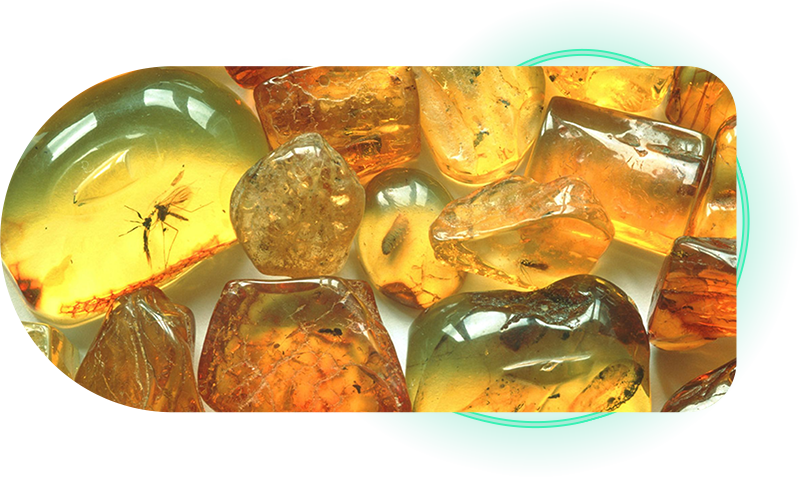Favorite CollLection Triceratops Real Figure Keyring
$11.95
Amber is fossil resin extruded as sap, usually from an injured or scarred deciduous or coniferous tree. It is known from sedimentary deposits as old as the Pennsylvanian, and from deposits as recent as the Miocene. Amber is the ideal time capsule, perfectly preserving insects, leaves, and small animals encapsulated when it was in its sticky resin state.
Amber is a hardened resin primarily composed of carbon, hydrogen and oxygen. It takes a fantastic polish and has been used extensively as jewelry since the Bronze age (2500-500 BC). For thousands of years, amber has been thought to have mysterious properties such as the ability to prevent disease, ward off bad luck, and give the bearer courage.
The principal source for amber since ancient times, has been the area around the Baltic Sea. Even today, Germany, Lithuania, and Latvia continue to produce great quantities of magnificent amber every year. The Dominican Republic has also been a major source for amber since Christopher Columbus’ day and has recently (in the last 25 years) been recognized for its remarkable quality and the variety of included insects and other small animals.

There are other fossil amber localities located throughout the world, but some of these localities have a young form of amber called copal. Copal looks very similar to amber, but is not as hard as true amber. Copal smells differently and will become sticky when heated. Even though copal often encapsulates small creatures from long ago and these species may now be extinct, many people still refer to it as a semi fossil.
Plastic is sometimes used to “fake” amber. Often, the manufacturer may include insects and other small animals within the resin, in order to produce credible fakes. Anyone planning to invest money in amber, should study how to tell real amber from copal and from plastic. Also, buy from reputable dealers and learn which amber is the most desirable.
Amber is one of the prettiest gemstones we have available, and… IT IS A FOSSIL!!